Great Siege of Malta
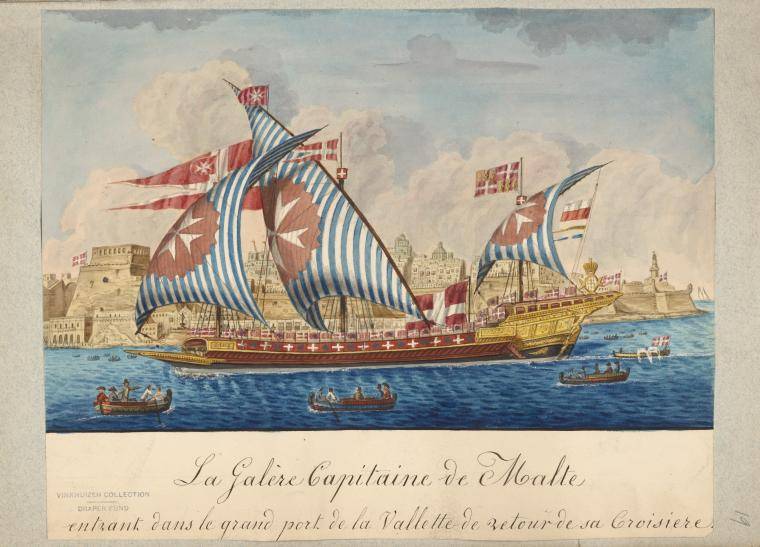
Nice story The Order of the Hospitallers (Johnites) began as early as 1048, when the Amalfi merchant Panteleon Mauro opened the first hospital in Jerusalem, with John of Alexandria chosen as the patron saint (but later John the Baptist became the patron of the new order). The patroness of women's hospitals, which appeared later, was Mary Magdalene. The first employees of the hospitals were Benedictine monks. In 1100, the first ruler of the Kingdom of Jerusalem, Gottfried of Bouillon, entrusted the care of the sick and wounded to Pierre-Gerard de Martigue, who volunteered to help 4 more knights. Martin became the first head of the Brotherhood of the Joannites - not yet an order.
The Charter of the Brotherhood of Hospitallers was approved only in 1113 by Pope Paschal II. He also gave his blessing for the construction of new hospitals for pilgrims - no longer in Palestine, but in the port cities of Europe: in Sant Giles, Asti, Pisa, Bari, Otranto, Taranto, Messina.
Military Order of St. John
The Brotherhood of Hospitallers was transformed into a military order under Raymond de Puy, who headed it for 40 years (from 1120 to 1160) and became the first Grand Master (before him, the leaders of the Johnites were called rectors).
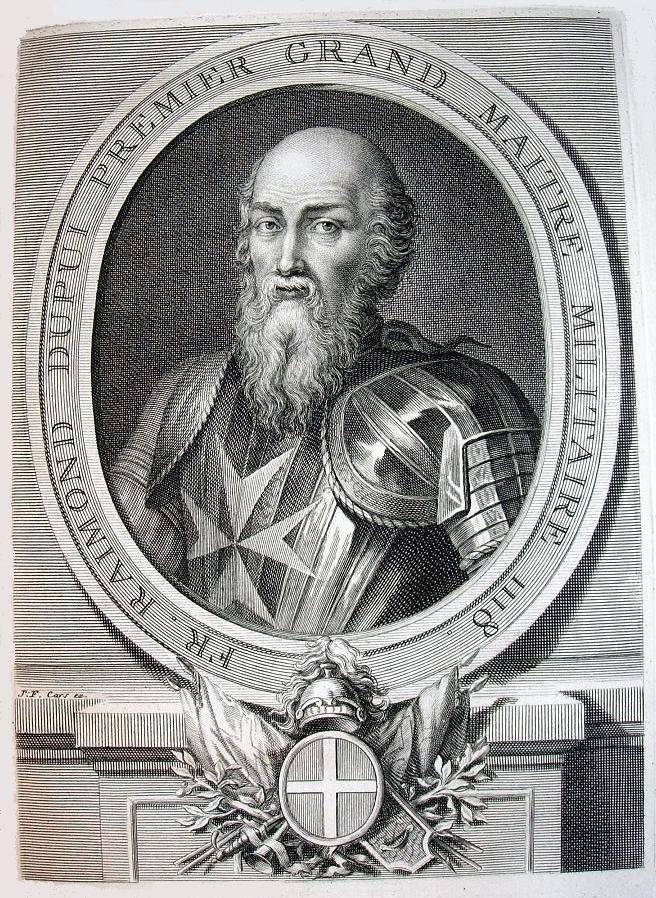
In 1130, the famous banner of the Order of the Hospitallers appeared - a white cross on a red background. In this form, it was approved by Pope Innocent II. The white color was supposed to symbolize chastity, the four directions of the cross were the main Christian virtues: prudence, justice, temperance, fortitude, and their eight branches were the blessings promised by Christ to the righteous in the Sermon on the Mount.
At the same time, a seal appeared with the image of a patient lying on a bed.
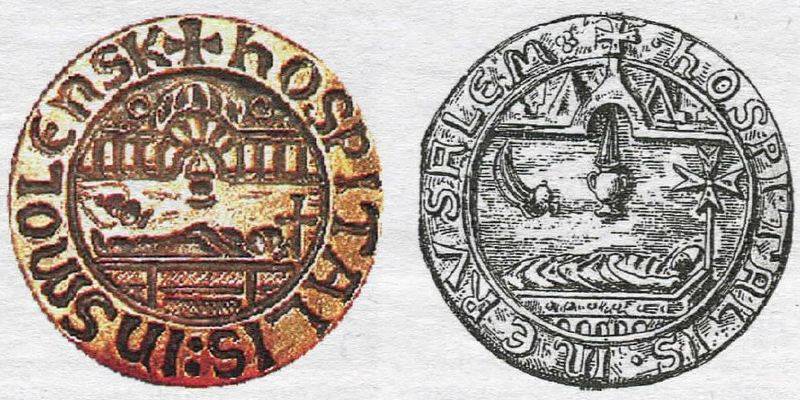
It was boring for the knights of the new order to mess around with the sick, and therefore, having transferred the care of them to the obscure "brothers", they took upon themselves the duty of military protection of the Holy Sepulcher and "fighting the infidels wherever they are found." That is, they became "colleagues" and even competitors of the Templars. In one of the chronicles of that time you can read:
Of course, it was difficult to compete with the "wise Templars", but the "valiant hospitallers" tried their best. By 1180, 25 castles in Palestine were already under the control of the Order of St. John. They also had possessions in mainland Europe.
In the 1247th century, the Christian states of Palestine were in decline. In 2, the Hospitallers lost Ascalon, which they defended, Master Guillaume de Chateauneuf was captured. The Johnnites suffered heavy losses during the 1271nd battle of Gaza and in the battle of El Mansur. In 1285, the Hospitaller castle of Krak des Chevaliers fell, in 1291 - Margab. Finally, in 7, Acre was abandoned by the Christians. The wounded Master of the Hospitallers Jean de Villiers and the XNUMX surviving knights went to Cyprus - to Limassol.
Hospitallers in Cyprus and Rhodes
Until 1306, the Hospitallers were in Cyprus, and then “bought” the island of Rhodes from Genoa, which actually belonged to the Byzantines, who were driven out by the summer of 1308. In 1312, Pope Clement appointed the Hospitallers as heirs to the property of the abolished Knights Templar, however, they got a little from this “inheritance” - something that the kings of France and England could not reach. In addition to Rhodes, the Hospitallers then owned significant possessions in mainland Europe, they were especially large in France and Aragon.
The main opponents of the Johnites of Rhodes were Mamluk Egypt and Ottoman Turkey. And the order of the Hospitallers was now a naval order, its knights were no longer horsemen, but captains of warships. But the Johnites also took part in land battles, for example, in 1396, when the army of the Turkish Sultan Bayezid I defeated the crusaders at Nikopol. Master Philibert de Nayac had to ransom the prisoners for 30 ducats.
In 1424, the Hospitallers tried to help Cyprus, which was attacked by the troops of the Egyptian Sultan Barsbay, but the Christians lost during the two-year war.
But the Hospitallers managed to defend their island in 1444, when the Egyptian commander az-Zahir tried to conquer it. It became quite alarming after the fall of Constantinople in 1453: now Rhodes was at the forefront of the struggle against the Ottoman Empire. From May 1479 to August 1480, battles were fought on the island with the Turkish army under the command of the renegade Mesikha Pasha (who converted to Islam Manuel Paleolog), ending in the defeat of the Ottomans and the evacuation of their troops from Rhodes. This victory made such an impression on contemporaries that in Europe the Hospitallers began to be called "Lions of Rhodes".
But the Johnites still had to leave Rhodes, when in 1522 the island was attacked by a new army, led by the Ottoman commander Mustafa Pasha and the famous Turkish pirate Kurdoglu. After fierce resistance on January 1, 1523, the surviving 180 members of the order, led by Master Villiers de l'Isle-Adam, left the island in three galleys.
Finding Malta
On March 24, 1530, the Holy Roman Emperor Charles V of Habsburg made a royal gift to the Hospitallers - two islands, Malta and Gozo.
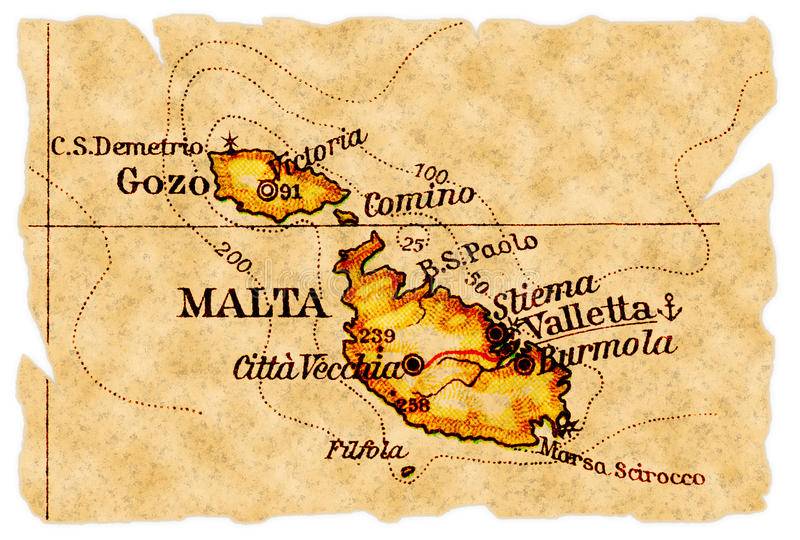
The Johnites recognized themselves as vassals of Charles, pledged to defend the city of Tripoli in northern Africa and once a year to send a hunting falcon to the kings of Spain (this condition was observed until 1798). The governor of Tripoli was the Maltese knight Jean Parisot de la Valette, a participant in the defense of Rhodes, who in 1544 acted as an intermediary in negotiations with the Ottoman admiral Khair ad Din Barbarossa, who besieged Genoa. One of the conditions for lifting the blockade, Barbarossa set the release of Turgut (Dragut) - an authoritative pirate who previously flew under his flag, and who began his career as a corsair under the leadership of the "great Jew from Smyrna" - Sinan Pasha.
Turgut was captured in 1540, already being the Ottoman governor of the "resort" island of Djerba. A ransom of 3 gold ducats was paid for Turgut, and contemporaries later called this deal "the most successful purchase of Barbarossa." Having received a squadron of ships from this admiral, Turgut, who missed his favorite job, immediately captured the Corsican city of Bonifaccio and attacked the island of Gozo, which belonged to Malta. In the next 500, he sacked the Italian cities of Monterosso, Corniglia, Manarola and Riomaggiore, Rappalo and Levante, in 1545 he successfully attacked the Tunisian cities of Sfax, Sousse and Monastir.
Since that time, Turgut in the Ottoman Empire began to be called the "Sword of Islam". When the great admiral Khair-ad-Din Barbarossa died in Constantinople in 1546, it was Turgut who began to be considered his successor. The new hero of the Ottoman Empire and the Maghreb in 1547 attacked Malta, Apulia and Calabria, in 1548 he received the post of Beylerbey of Algeria, marking this appointment with an attack on Campania. Well, he “thanked” the governor of Tripoli, La Valetta: he captured the Maltese galley La Caterinetta, which was carrying 7 escudos allocated to finance work to strengthen the walls of Tripoli. New funds could not be raised, and in 1549 La Valette returned to Malta, and Tripoli fell in 1551.
In 1557, when Jean Parisot de la Valette was elected master, he was already 67 years old.
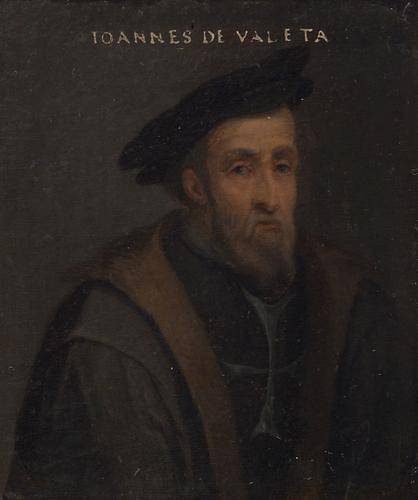
It was he who was to lead the defense of Malta during the Great Siege of this island, and one of his opponents was an old acquaintance - Turgut-reis. By this time, Turgut had already managed, on the orders of the Sultan, in 1552-1554. to fight for the French king Henry II: he then defeated the combined Spanish-Italian fleet of Charles V near the island of Ponza, captured the Calabrian cities of Corrotone and Castello, ravaged Sicily, Sardinia, Capri and Corsica. And in 1560, squadrons of three renegades - the Asia Minor Greek Turgut, the Hungarian or Croat Piyale Pasha and the Calabrian Uludzha Ali, defeated the fleet of the Spanish king Philip II (son of Charles V), who had captured Djerba. From the bones and skulls of the Spaniards who defended this island, a pyramid was built, which lasted until 1846.
Now, following the order of Sultan Suleiman I, 80-year-old Turgut hurried to Malta. It is here that this famous Ottoman admiral will find his death.
Knights of Malta and renegades of the Ottoman Empire
The Maltese hospitallers, preserving the traditions of Rhodes, immediately began to annoy the Ottomans at sea, intercepting merchant ships and engaging in battles with Turkish warships. Particularly successful was Mathurin d'Aux de Lescout, better known as Romegas - from the name of the town La Romieu (same root with the word arroumîu - "pilgrim"), where his family's estate was located. By the same principle, we would have called a successful ushkuinist Peter of Novgorod or Ivan Porkhovchanin.
Mathurin de Lescaut was a Gascon nobleman who received the title of Knight Hospitaller in 1546, becoming the captain of a battle galley (at this time he was about 20 years old). Meanwhile, the crew of a large Maltese galley then ranged from 400 to 500 people, of which 18 sailed and 255 sat at the oars. The position of the senior rower was called tormentor - literally translated as “executioner” (recall that another name for the galley is “penal servitude”, a word that has become a household word). In Italy, the senior rower was often called a comit, in Arab countries and in Turkey, an algwazil.
By the way, in the slave market of Malta (there was one, where captured Berbers and Turks were sold), the cost of a slave fit to be a galley rower averaged 144 ecu. Their purchase was carried out at the expense of funds obtained by the Maltese corsairs and donations from European aristocrats. But only 70% of the rowers were slaves, another 15% were convicted criminals (convicts), but the rest were civilian employees (one can imagine what state a person had to reach in order to decide to get such a job). Sometimes convicts who had served their time remained in the galleys, who had nowhere to go. There were about a hundred soldiers in the big galleys. In addition, the crew included 6 gunsmiths, two barbers, a clerk, a carpenter and a cabin boy.
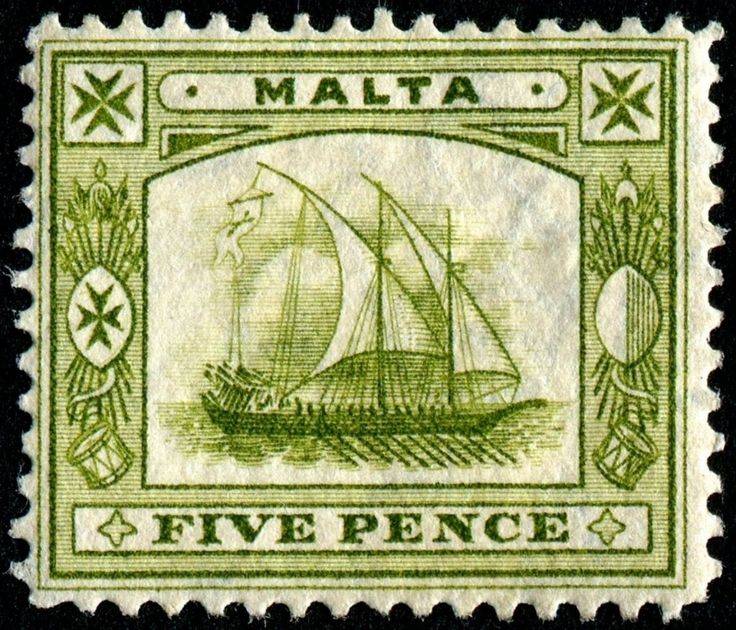
They say that before the battle on the Maltese galleys they tried to put wine, bread and cheese along the sides - it was believed that a person going to his death should not be hungry. However, such a tradition also existed in other states, although it was not always observed. It is known that the products were displayed on the ships of the Holy League before the Battle of Lepanto.
In 1556, Romegas (together with a pet monkey) miraculously survived a terrible storm that drowned many galleys in the Grand Harbor of Malta: waiting for help, he had to stand chest-deep in water for several hours in an air bubble formed under the keel of an overturned ship. In 1563, Romegas captured a large ship carrying the sanjakbey of Cairo, later ransomed for 18 ducats. In 1564, he participated in the campaign of Philip II in Morocco, which ended in the capture of Badis. In 1571, during the battle of Lepanto, he commanded the admiral's galley of Pope Pius V (the pontiff, of course, was in Rome at that time). When, at the last review before the battle, Juan wished to know the opinion of an experienced Maltese in maritime affairs, he said:
In 1575, Romegas became the commander of all fleet galleys of Malta, in 1576 - Grand Prior of Toulouse, in 1577 - Deputy (Lieutenant) of the Master, who was then Jean de la Casier. La Casier, unlike Romegas, was unpopular in Malta and did not enjoy authority. In 1581, he was deposed from the post of master and imprisoned in Fort Sant'Angelo, and Romegas became the "anti-grandmaster." Pope Gregory XIII did not recognize Romegas as a master, and many believe that he was poisoned in Rome, where he arrived for negotiations. Romegas died on November 4, 1581. But we're going back 17 years.
In 1564, Romegas captured 4 large Turkish ships, but one of them was of particular importance. In April of that year, the squadrons of Romegas and Pietro di Gio tracked down and intercepted a large Turkish galleon between the islands of Zakynthos and Kefalonia, heading from Constantinople to Venice. The ship belonged to Kustir-aga, the chief eunuch of the harem of Sultan Suleiman I, whom the Turks call Kanuni (Legislator), and the Europeans call him the Magnificent. 200 janissaries were allocated to protect the ship and the cargo it carried (some of the goods belonged to the sultan's wives and his daughters). The naval battle lasted 5 hours and ended with the victory of the Maltese. In Syracuse, where the Ottoman galleon was brought, the goods from its holds were valued at 80 ducats.
But this was not enough: among the passengers of the galleon were the governors of Cairo and Alexandria, as well as a friend (according to other sources, a doctor) of one of the daughters of Suleiman I. The capture of this ship was declared a personal insult to the Sultan, and on May 18, 1565, the Ottoman army landed in Malta , which was headed by the fourth vizier Mustafa Pasha Kizilahmetli.
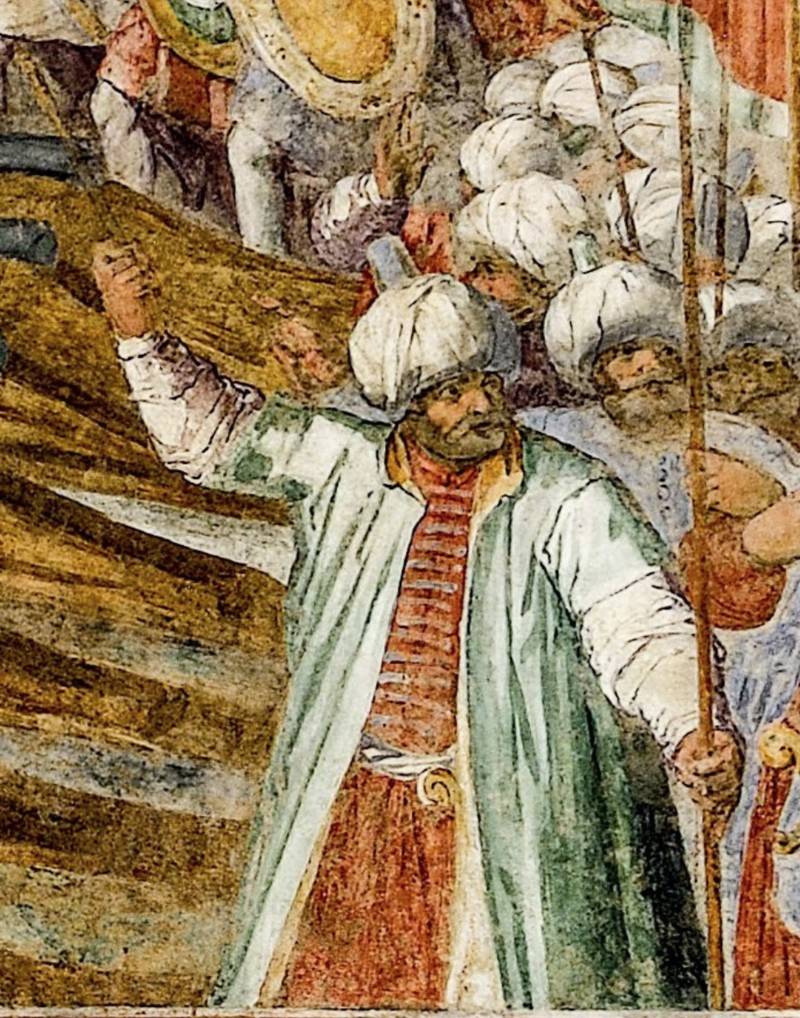
Piyale Pasha, either a Hungarian or a Croat, who came to Turkey as a child after the Battle of Mohacs (August 29, 1526), was appointed Admiral of the Fleet, on whose ships Mustafa's army sailed. He was converted to Islam and made an amazing career, becoming the third person in the empire and the husband of Selim's daughter, the granddaughter of Suleiman the Magnificent and Roksolana.
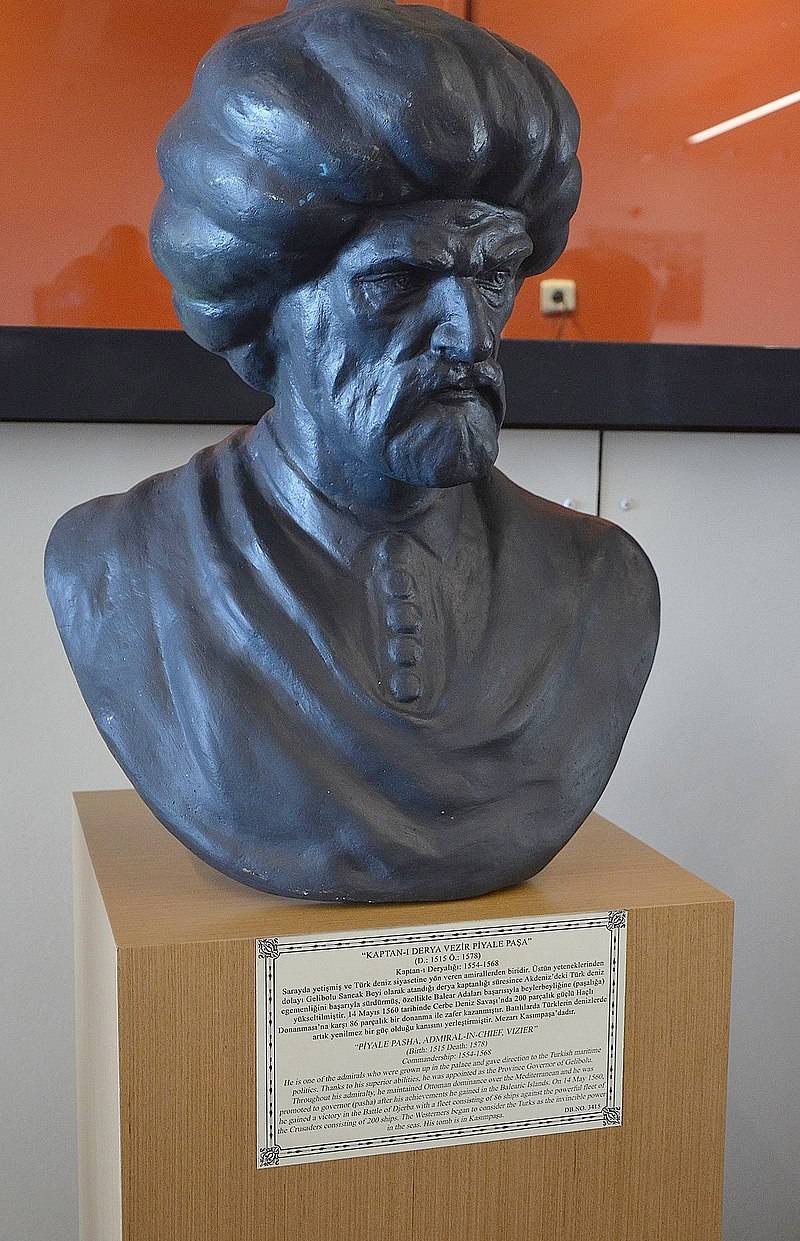
The remark of the Grand Vizier Semiz Ali, who apparently did not like Piyali and Mustafa, is curious:
A few days after the arrival of Mustafa and Piyali Pasha in Malta, they were joined by the Bey of Tripolitania Turgut Reis, who at that time was already 80 years old.
In total, 193 Ottoman ships came to the shores of Malta: galleys - 131, galliots - 7, galleasses - 4, transport dhows - 51. They were joined by corsair galleys and shebeks, which were brought by the Calabrian Giovanni Dionigi Galeni, who adopted the name Uluj Ali after converting to Islam - 75 ships. Together with the crews of the ships, the total number of Ottoman troops reached 35 thousand people (including 6 thousand Janissaries and 9 thousand cavalrymen).
They were opposed by about 9 thousand defenders of Malta, among whom were 592 knights-hospitals, up to 500 sailors of galleys and the same number of slave rowers who were promised freedom, almost 6 thousand Maltese militias, more than 1 Spanish soldiers, about 200 Greek and Sicilian volunteers . The fleet of the order, with the exception of a few galleys, left for Sicily.
Siege of Malta
The Ottoman fleet approached Malta on May 18, 1565, and on the 23rd, the bombardment of Fort San Elmo began, which covered two narrow bays, preventing Ottoman ships from approaching Fort St. Angelo and the city of Birge.
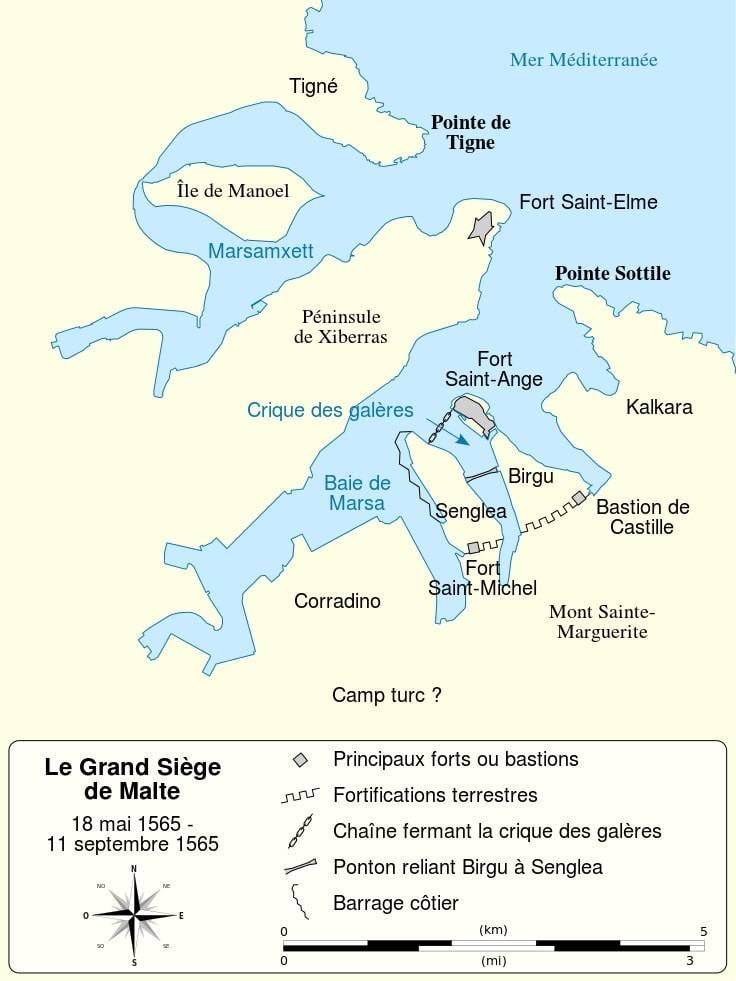
The Ottomans had an advantage in artillery. Maltese guns fired cannonballs weighing 4,5 kg, the flight range did not exceed a kilometer. The Turks also brought large siege weapons, the weight of the cores of which reached 70 kg, they hit a distance of three kilometers. Two bombards stood out in particular, the cores of which, according to the Italian arquebusier Francesco Balbi di Correggio, "buried into the ground for thirty palms."
But the Maltese very effectively used Greek fire against the Turks going to storm, the secret of which they managed to learn in Byzantium.
The Ottomans tried to dig under the walls and lay mines under the walls. It is claimed that they also built a huge mobile siege tower, which the Maltese managed to shoot with shells from the halves of the core connected by a chain, usually used to break ship sails and equipment: by concentrating fire on the base of the tower, they made it collapse.
Fort St. Elmo was defended by 120 knights of Malta and a detachment of 400 Spaniards. The Turks expected to take possession of this fleet in a week, but its defenders held out for a whole month.
It was here that Turgut-reis was killed - either with a cannonball, or with a piece of stone that fell into the eye. He was buried in Tripoli.
Turgut was replaced by another famous renegade, Uluj Ali, who later successfully fought on his flank during the Battle of Lepanto and quickly rebuilt and reformed the Ottoman fleet, which had suffered heavy losses.
Three days before the fall of San Elmo, one of the knights made his way to La Valetta, who brought a letter from the commandant with a proposal to break out of the doomed fort. The master's response was extremely harsh:
Upon learning of this, 5 more knights and 50 soldiers voluntarily went to Fort St. Elmo along with the messenger.
Almost all the soldiers of the garrison of this fort died on June 23, with the exception of five people who jumped into the water and nine who were taken prisoner, but the Turks lost up to 8 thousand soldiers. Looking at the ruins of the captured San Elmo Fort, Mustafa Pasha said:
He offered La Valette an honorable surrender and, having been refused, ordered the beheaded bodies of the slain knights to be crucified: at high tide, they were sent on rafts to Fort Sant'Angelo, where La Valette was with the main forces. The master in response ordered to cut off the heads of the captured Turks and shoot them in the direction of the enemies.
On the day of the fall of Fort St. Elmo, galleys (2 order and 2 Sicilian) managed to approach Malta unnoticed, delivering reinforcements - 42 knights of the order, 25 volunteers from Italy and Germany and 600 Spanish soldiers.
On August 7, the Turks almost captured the fort of St. Michael and the city of Birgu, but the governor of Mdina (at that time the capital of the island) noticed that the Ottoman camp was left without protection. He sent only a hundred cavalrymen to attack him, who planted one foot soldier behind him. The success of this attack exceeded all expectations: having dispersed the servants and killed the wounded, the Maltese set fire to the camp, which caused confusion in the attacking Ottoman troops. Deciding that Christian reinforcements had arrived on the island and that a blow from the rear was about to follow, the Turks stopped the assault. When the commander realized that a minor diversion had taken place, it was already too late.
And a month later, on September 7, a detachment really arrived in Malta, consisting of the soldiers of the Viceroy of Sicily, Don Garcia de Toledo, the hospitalists of the European commanderies and the knights of the Order of Santiago de Campostelo. Mustafa Pasha at first gave the order to land his army on ships, but, having specified the number of troops that had arrived, he decided to join the battle. On September 8, the Turkish troops, weakened by a long siege, were defeated, losing about a thousand people, and Mustafa Pasha gave the final order to evacuate the island.
The Ottomans sailed from Malta on September 11, losing in 4 months, according to various estimates, from 10 to 35 thousand people. Sultan Suleiman, who learned about the defeat, consoled himself with the words:
However, he nevertheless demoted Mustafa. But his favorite Piyale Pasha retained his position and fully justified the trust of the Sultan: already in April of the following year, he captured the islands of Chios and Naxos, and then plundered the coast of Apulia.
The losses of the Hospitallers and their allies ranged from three to six thousand people, including 260 knights.
La Valletta
On March 28, 1566, a new city was founded in Malta, which became the capital of the island. It was designed by the Italian architect Francesco Laparelli in such a way that the streets were blown and refreshed by the sea breeze, and the houses had a centralized sewerage system. The city was named after the master who defended the island - Valletta.
Fall of Malta
The history of the Order of the Hospitallers was still going on. There were many battles and victories ahead, crossed out by the shameful surrender of the last master Ferdinand von Gompesch to Bonaparte on June 12, 1798. Meanwhile, the Corsican did not have time to besiege Valletta, and the fortress itself, on the walls of which there were 1 cannons, was so good that the French general Caffarelli, after examining it, said:
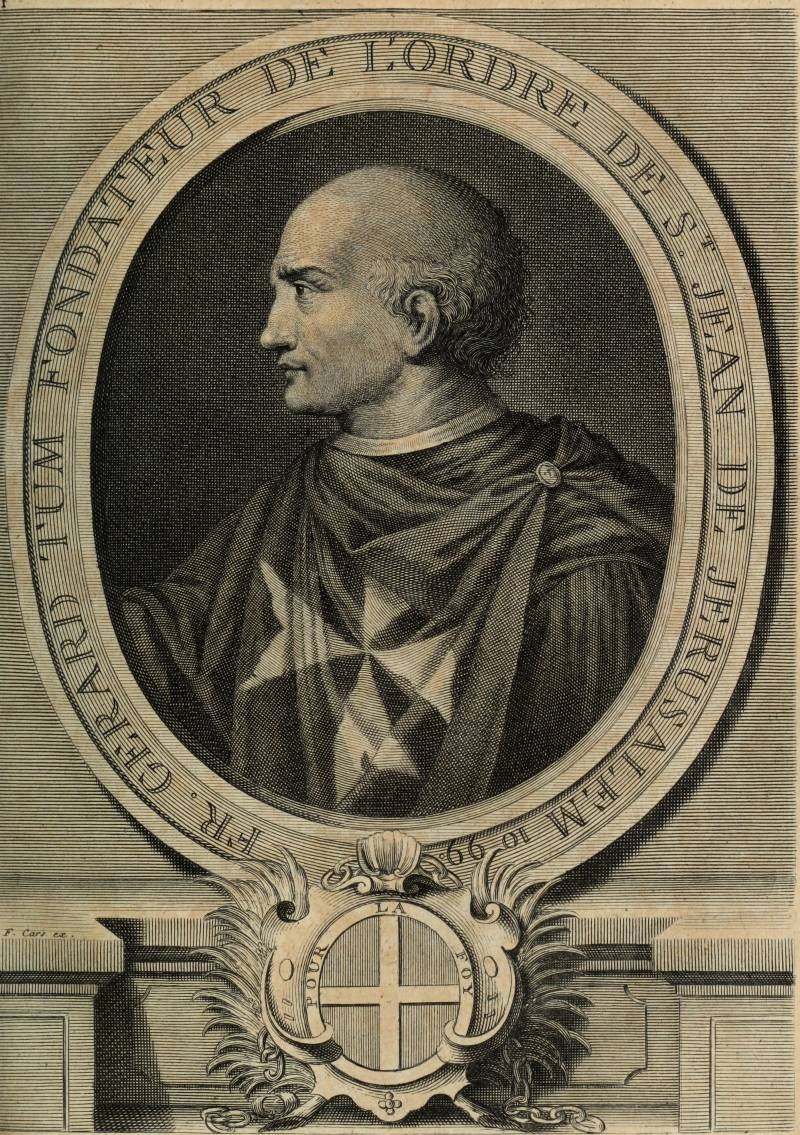
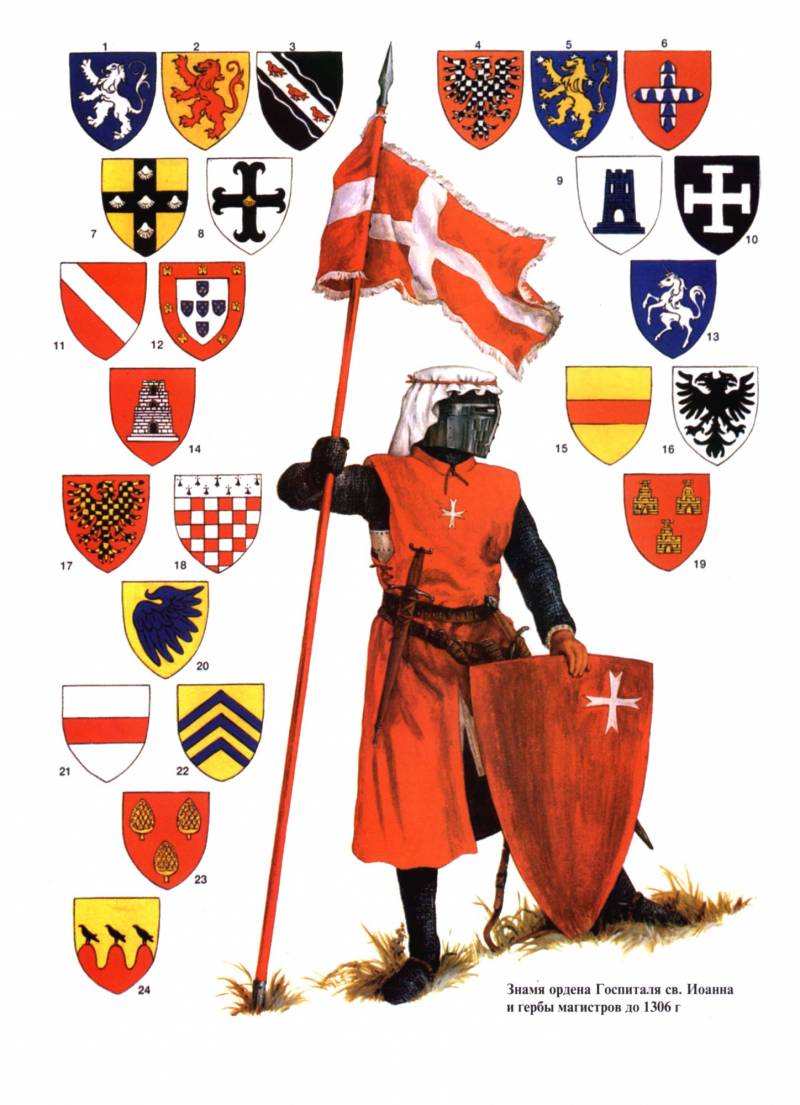
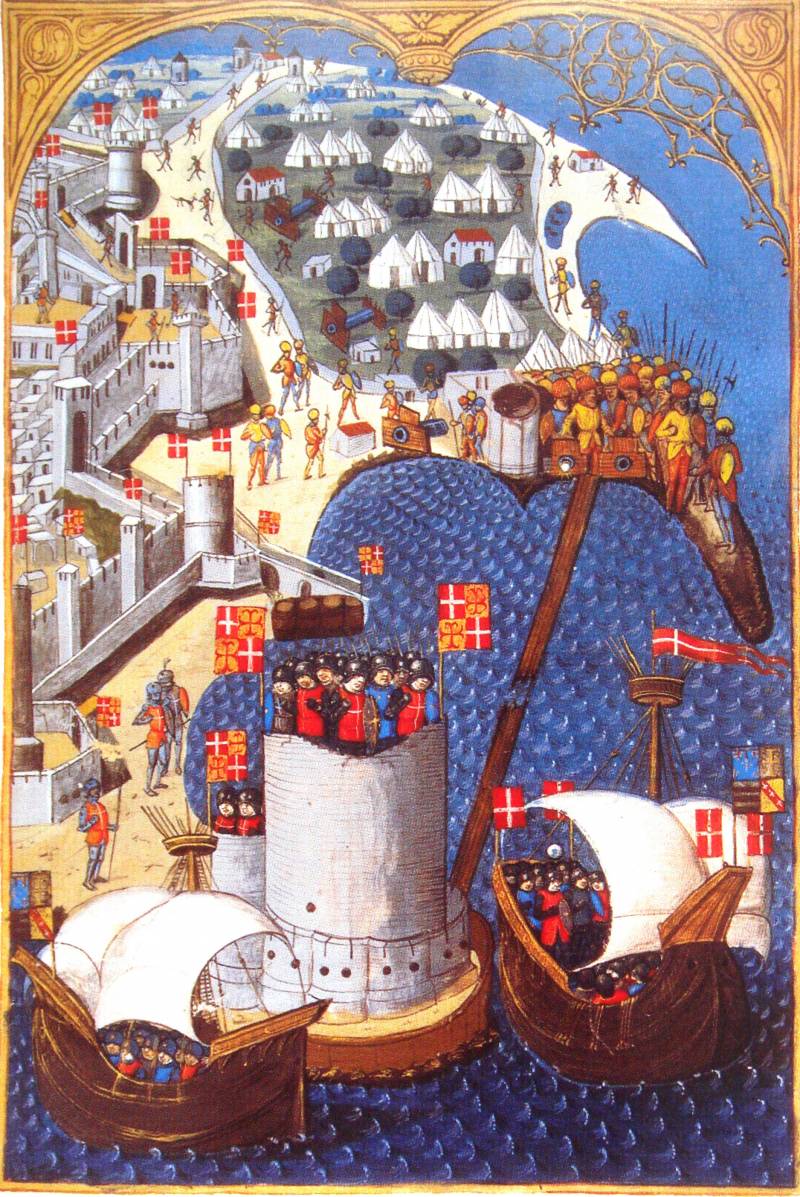
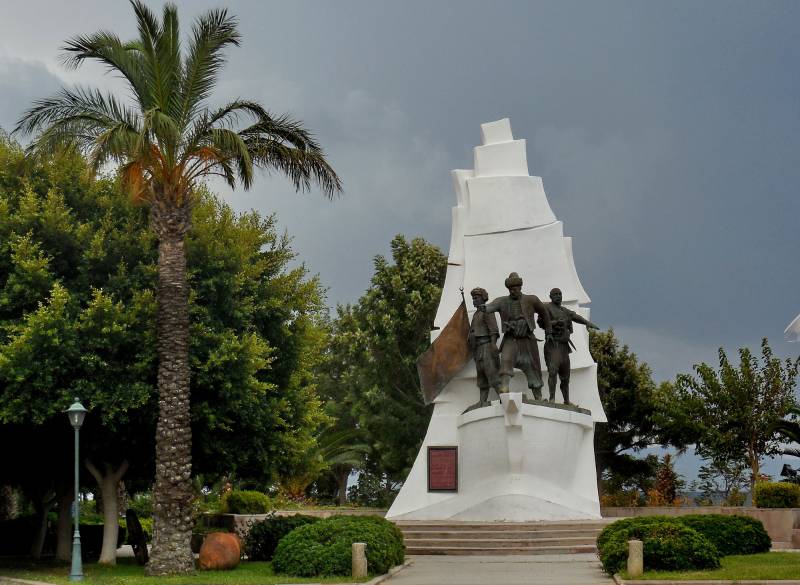
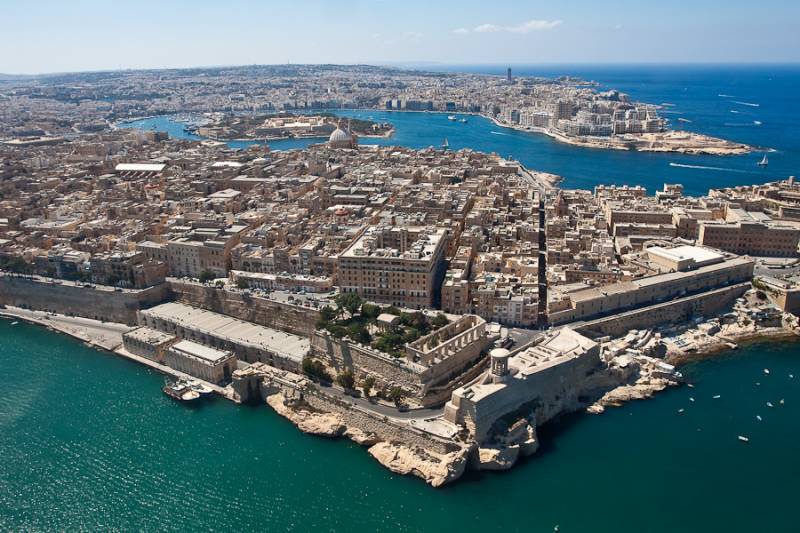
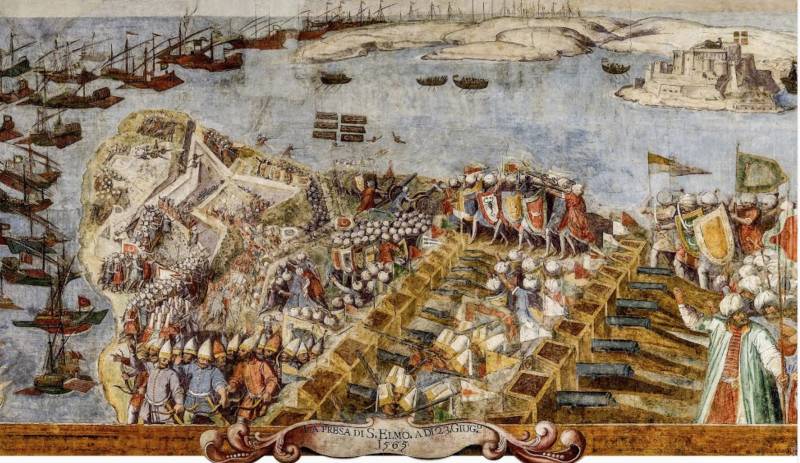
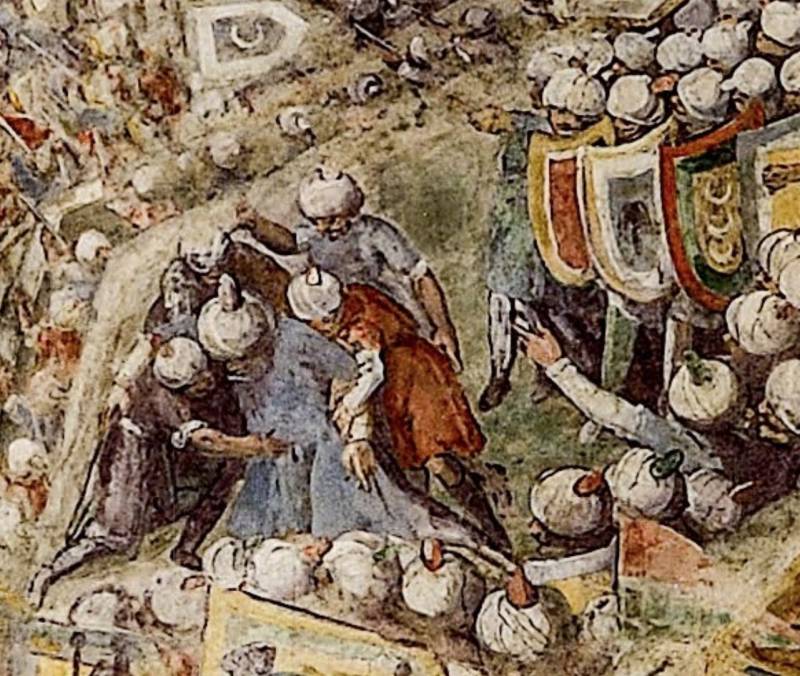
Information